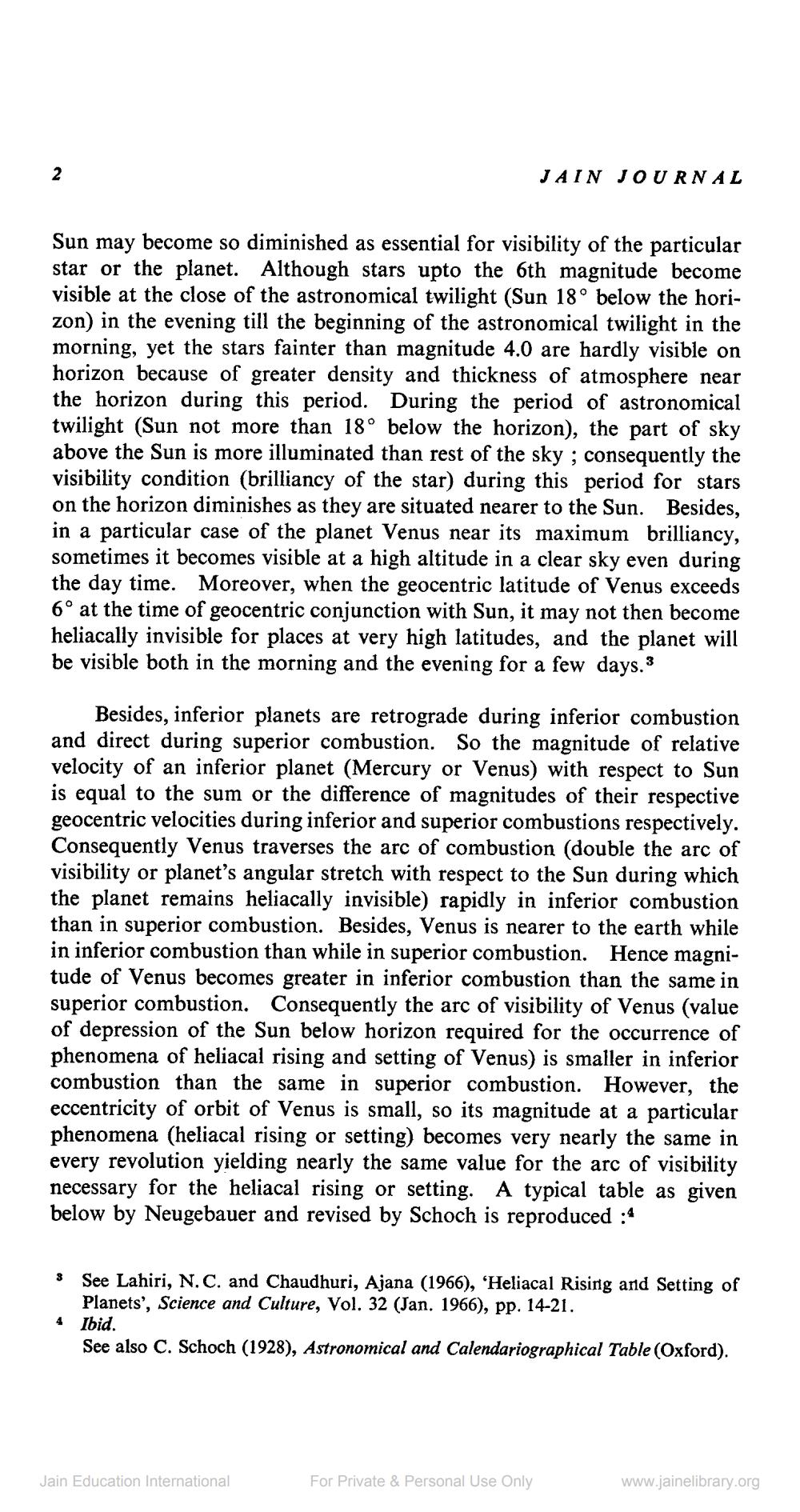Book Title: Jain Journal 1983 07 Author(s): Jain Bhawan Publication Publisher: Jain Bhawan Publication View full book textPage 6
________________ 2 Sun may become so diminished as essential for visibility of the particular star or the planet. Although stars upto the 6th magnitude become visible at the close of the astronomical twilight (Sun 18° below the horizon) in the evening till the beginning of the astronomical twilight in the morning, yet the stars fainter than magnitude 4.0 are hardly visible on horizon because of greater density and thickness of atmosphere near the horizon during this period. During the period of astronomical twilight (Sun not more than 18° below the horizon), the part of sky above the Sun is more illuminated than rest of the sky; consequently the visibility condition (brilliancy of the star) during this period for stars on the horizon diminishes as they are situated nearer to the Sun. Besides, in a particular case of the planet Venus near its maximum brilliancy, sometimes it becomes visible at a high altitude in a clear sky even during the day time. Moreover, when the geocentric latitude of Venus exceeds 6° at the time of geocentric conjunction with Sun, it may not then become heliacally invisible for places at very high latitudes, and the planet will be visible both in the morning and the evening for a few days.* 3 Besides, inferior planets are retrograde during inferior combustion and direct during superior combustion. So the magnitude of relative velocity of an inferior planet (Mercury or Venus) with respect to Sun is equal to the sum or the difference of magnitudes of their respective geocentric velocities during inferior and superior combustions respectively. Consequently Venus traverses the arc of combustion (double the arc of visibility or planet's angular stretch with respect to the Sun during which the planet remains heliacally invisible) rapidly in inferior combustion than in superior combustion. Besides, Venus is nearer to the earth while in inferior combustion than while in superior combustion. Hence magnitude of Venus becomes greater in inferior combustion than the same in superior combustion. Consequently the arc of visibility of Venus (value of depression of the Sun below horizon required for the occurrence of phenomena of heliacal rising and setting of Venus) is smaller in inferior combustion than the same in superior combustion. However, the eccentricity of orbit of Venus is small, so its magnitude at a particular phenomena (heliacal rising or setting) becomes very nearly the same in every revolution yielding nearly the same value for the arc of visibility necessary for the heliacal rising or setting. A typical table as given below by Neugebauer and revised by Schoch is reproduced :4 JAIN JOURNAL 3 See Lahiri, N. C. and Chaudhuri, Ajana (1966), 'Heliacal Rising and Setting of Planets', Science and Culture, Vol. 32 (Jan. 1966), pp. 14-21. 4 Ibid. See also C. Schoch (1928), Astronomical and Calendariographical Table (Oxford). Jain Education International For Private & Personal Use Only www.jainelibrary.orgPage Navigation
1 ... 4 5 6 7 8 9 10 11 12 13 14 15 16 17 18 19 20 21 22 23 24 25 26 27 28 29 30 31 32 33 34 35 36 37 38 39 40 41 42 43 44 45 46 47
